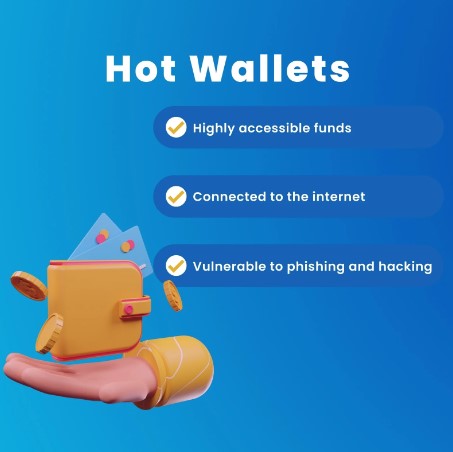As the popularity and value of cryptocurrencies continue to rise, ensuring their security has become a top priority for investors and enthusiasts alike. The phrase “not your keys, not your coins” underscores the fundamental principle that owning and securing your private keys is crucial to maintaining control over your digital assets. With numerous methods available for storing cryptocurrencies, understanding the best and most secure options can significantly reduce the risk of hacking, theft, and loss.
Cryptocurrency storage methods generally fall into two categories: hot storage and cold storage. Hot storage involves wallets that are connected to the internet, such as software wallets and online exchange wallets. While these are convenient and easily accessible, they are also more vulnerable to cyberattacks. Cold storage, on the other hand, includes hardware wallets and paper wallets, which are offline and thus offer a higher level of security.
The Importance of Security in Cryptocurrency Storage
The primary concern for most crypto enthusiasts and investors is security. With the rise in cyber threats and high-profile exchange hacks, it is essential to adopt robust security practices to safeguard your digital assets. Here are some key considerations:
- Private Key Management: Your private key is the gateway to your cryptocurrency holdings. It is imperative to keep this key secure and private, as anyone with access to it can control your assets.
- Cold Storage Solutions: Utilizing cold storage options like hardware wallets significantly reduces the risk of online threats. These devices store your private keys offline, making them less susceptible to hacking attempts.
- Backup and Recovery: Always have a backup of your recovery phrase in a secure location. This phrase is essential for restoring access to your wallet if the device is lost or damaged.
- Two-Factor Authentication (2FA): Enable 2FA on all accounts related to your cryptocurrency activities. This adds an extra layer of security, making it more challenging for unauthorized users to gain access.
- Regular Software Updates: Ensure that your wallet software and devices are up-to-date with the latest security patches. This helps protect against known vulnerabilities.
Understanding Cryptocurrency Storage
What is Cryptocurrency Storage?
Cryptocurrency storage involves keeping the digital keys that allow access to your crypto assets secure. Unlike traditional currency, cryptocurrencies exist only in digital form, and access to them is controlled through cryptographic keys. These keys are typically stored in wallets, which can be classified into various types based on their connectivity to the internet and method of key storage.
Types of Crypto Wallets
Cryptocurrency wallets can broadly be categorized into hot wallets and cold wallets, each offering different levels of security and convenience.
Hot Wallets Hot wallets are connected to the internet and provide quick and easy access to your crypto assets. They are ideal for daily transactions but come with higher security risks due to their online nature. Examples include:
- Software Wallets: These are applications that can be installed on your computer or mobile device. Examples include Exodus and Electrum.
- Mobile Wallets: Designed for use on smartphones, these wallets offer convenience for on-the-go transactions. Popular mobile wallets include Mycelium and Trust Wallet.
- Web Wallets: These wallets run on the cloud and can be accessed via web browsers. They are often used by crypto exchanges. Examples include Coinbase and Binance wallets.

Cold Wallets Cold wallets, also known as offline wallets, are not connected to the internet, providing a higher level of security. They are ideal for long-term storage and large amounts of cryptocurrency. Types of cold wallets include:
- Hardware Wallets: Physical devices that store private keys offline. Examples include Ledger Nano S/X and Trezor.
- Paper Wallets: Physical documents that contain private keys and QR codes. These can be generated using offline tools and should be stored securely to prevent physical damage or loss.
- Cold Storage Solutions: These include methods like air-gapped computers and specialized devices that store crypto keys in highly secure environments, completely isolated from any network.
Hot Wallets vs. Cold Wallets
Hot Wallets:
- Advantages:
- Easy access and user-friendly interfaces.
- Convenient for frequent transactions and active trading.
- Usually free to use.
- Disadvantages:
- Higher risk of being hacked due to constant internet connectivity.
- Vulnerable to malware and phishing attacks.
Cold Wallets:
- Advantages:
- High security due to offline storage, making them immune to online hacking.
- Ideal for long-term storage and significant crypto holdings.
- Disadvantages:
- Less convenient for quick transactions.
- Can be costly, especially hardware wallets.
- Physical damage or loss can be a risk if proper backups are not maintained.
Choosing the Right Wallet
Selecting the appropriate wallet depends on your needs and how you intend to use your cryptocurrency. For everyday transactions and active trading, hot wallets offer the convenience and speed required. However, for securing large amounts of crypto or assets you plan to hold for an extended period, cold wallets provide unparalleled security.
In the subsequent sections, we will delve deeper into the most secure methods for storing cryptocurrency, discussing hardware wallets, paper wallets, and the best practices to ensure your crypto assets remain safe from hacking and theft.
The Most Secure Methods to Store Cryptocurrency
In this section, we’ll explore the most secure methods to store cryptocurrency, focusing on hardware wallets, paper wallets, and cold storage solutions. These methods provide the highest levels of security and are essential for anyone serious about protecting their crypto assets.
Hardware Wallets
What Are Hardware Wallets?
Hardware wallets are physical devices specifically designed to store cryptocurrency private keys offline. They are considered one of the most secure methods for storing crypto due to their offline nature, which makes them immune to online hacking attempts.
Popular Hardware Wallets
- Ledger Nano S/X: Ledger wallets are highly regarded for their robust security features. The Ledger Nano S is a cost-effective option, while the Ledger Nano X offers additional features like Bluetooth connectivity.
- Trezor: Another popular choice, Trezor wallets provide top-notch security and an intuitive interface. The Trezor One is the basic model, while the Trezor Model T offers advanced features like a touchscreen.
Setting Up and Using a Hardware Wallet
- Initialization: When you first set up a hardware wallet, you’ll need to initialize it by creating a new wallet or restoring an existing one using a recovery phrase.
- Backup and Recovery: During the setup process, you’ll be provided with a recovery phrase (usually 24 words). This phrase is crucial for recovering your wallet if the device is lost or damaged. Store this phrase securely offline.
- Transacting: To send or receive cryptocurrency, connect your hardware wallet to a computer or mobile device. Transactions must be confirmed on the device itself, adding an extra layer of security.
Advantages and Security Features
- Offline Storage: Private keys are stored offline, eliminating the risk of online hacking.
- PIN Protection: Access to the wallet is protected by a PIN code.
- Physical Confirmation: Transactions require physical confirmation on the device, preventing remote attacks.
- Firmware Updates: Regular updates from manufacturers help patch security vulnerabilities.
Paper Wallets
What Are Paper Wallets?
A paper wallet is a physical document containing your cryptocurrency private keys and public addresses, usually in the form of QR codes. Paper wallets are completely offline, making them highly secure from digital threats.
Creating and Storing a Paper Wallet
- Generating a Wallet: Use a reputable paper wallet generator, preferably one that can be used offline, such as bitaddress.org or walletgenerator.net.
- Printing: Print the wallet on a secure printer. Avoid digital copies to maintain offline security.
- Storage: Store the paper wallet in a secure location, such as a safe deposit box or a home safe. Consider making multiple copies and storing them in different locations.
Advantages and Security Features
- Offline Storage: Completely offline, eliminating digital hacking risks.
- Simple to Create: Easy to generate using offline tools.
- Cost-Effective: No need to purchase additional hardware.

Cold Storage Solutions
What Is Cold Storage?
Cold storage refers to any method of storing cryptocurrency offline. This can include hardware wallets, paper wallets, and other specialized devices that are not connected to the internet.
Implementing Cold Storage
- Air-Gapped Computers: Use a dedicated computer that has never been connected to the internet to generate and store keys.
- Specialized Cold Storage Devices: Devices like the Coldcard Wallet are designed for secure cold storage and provide additional security features.
Advantages and Security Features
- Maximum Security: By keeping keys offline, cold storage provides the highest level of security against online threats.
- Reduced Attack Surface: Eliminates the risk of malware and phishing attacks.






